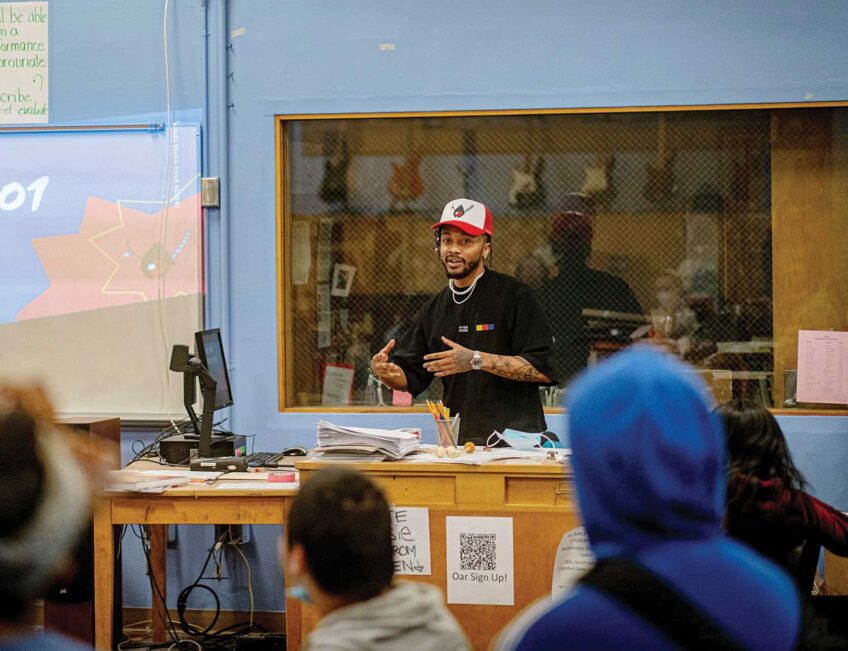Anti-DEI laws could further exacerbate the already critical Black physician shortage

By now, it’s clear: A shortage of Black doctors is shortening the lives of Black people. Stemming from Jim Crow-era oppression, politicians and activists have tried to address the shortage with plans ranging from more aid to STEM programs in Black schools to tuition-free medical schools.
But experts say new anti-diversity laws in states like Texas and Florida — coupled with the Supreme Court’s 2023 decision dismantling affirmative action — are new hurdles to increasing the number of Black physicians.
And although the shortage is hampering Black community health, the issue has broader implications for the entire nation, from lost workplace productivity to increased healthcare costs.
“The cost of racial and ethnic health disparities is over $451 billion annually,” says Georges Benjamin, executive director of the American Public Health Association, a nonprofit focused on minority health. “So the cost of not having the political will to eliminate preventable health inequities is enormous.”
Dr. Brian Smedley, a public health expert, says the Supreme Court’s decision to eliminate racial preferences in college admissions — but maintain it for the nation’s five military academies — illustrates the nation’s values.
“If diversity is important for our military readiness, and for our national defense, isn’t diversity as important when it comes to matters of life and death for patients of color?” says Smedley, co-founder and executive director of the National Collaborative for Health Equity.
“I think we have had some misplaced priorities, when we fail to recognize the importance of trying to preserve and protect the lives of people of color,” he says.
For decades, studies have indicated the lack of Black doctors in the United States is a significant issue impacting health care outcomes [and] social determinants of health. While Black people have disproportionately high rates of diseases like diabetes and asthma, and shorter life expectancies than whites, studies show they are more likely to seek treatment — and receive proper care — if their physician looks like them.
The dearth of Black doctors stretches back more than a century. In the early 1900s, the Carnegie Foundation and the American Medical Association commissioned a report on medical education in the U.S. The Flexner report found that medical schools at HBCUs, who trained most Black doctors, had low admissions standards and poorly educated its students — a conclusion that triggered the closure of all but two Black medical schools.
At the same time, segregation laws and policies — many of which continued well into the 20th century — kept promising Black students out of most white medical schools and teaching hospitals.
Benjamin says the anti-diversity push comes on top of a host of other barriers keeping would-be Black doctors out of medical school.
“This [shortage of Black doctors] is the result of a diminished pipeline into the sciences and undergraduate majors that led to medical careers, the cost of medical education, inadequate exposure to role models in medicine and bias in the selection systems that accept applicants for medical school,” he says.
Despite Black people making up 13.6% of the U.S. population, only 5.7% of physicians are Black, according to the AAMC’s 2022 survey of 950,000 doctors.
According to the Journal of the American Medical Association, a recent study found that a 10% increase in Black physicians led to a 30-day increase in life expectancy, particularly in areas with high rates of poverty. More Black doctors also narrowed the Black-white health gap, according to JAMA.
Healthcare companies like CommonSpirit, as well as philanthropic organizations and community nonprofits, are trying to address the shortage with mentorship programs, targeted recruitment and free tuition. But those programs are running into a surge of red-state anti-diversity programs that affect higher education.
In March, for example, the University of Florida, the state’s flagship school, eliminated all DEI programs and cut related jobs. Lawmakers in Alabama, Texas, Idaho, North Carolina, and Wyoming have all followed suit.
A survey by the American Association of Medical Colleges found that Black students made up around 10% of first-year med students in 2023-24, a slight decrease from 10.2% the year before.
Smedley of the Urban Institute says those numbers likely will continue to slide in the coming years, particularly after the Supreme Court eliminated race as a factor in college admissions.
“We need to go no further than last summer’s students for the fair admissions ruling by the U.S. Supreme Court prohibiting the consideration of race and ethnicity in higher education admissions,” he says.
At the same time, “there are many individuals with a political agenda attacking evidence-based diversity, equity and inclusion initiatives,” says Smedley. “My question for them is, if not DEI, what would you put into place to ensure that patients of color receive the same if not better care than white patients?”
One of the most profound effects of this shortage is on social determinants of health, including economic stability, education access and healthcare access.
“When it comes to health care itself, we know that diversity among health professionals is associated with better care for diverse populations,” says Smedley. “In fact, infant mortality is reduced by 50% when the delivering physician is himself or herself African American in concordance with the birth of the birthing parent.”
“So, we know that not only does racial concordance improve communication, it improves trust and also is associated with better outcomes for patients,” he says. “As the Association of American Medical Colleges has said, diversity in health among our health professionals is a matter of life and death for patients of color.”
This story appeared in Word In Black on July 11, 2024.






